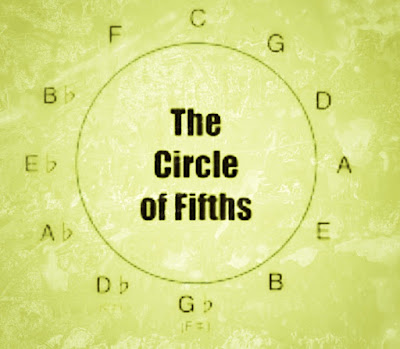 |
| not too dissimilar to “THE GREAT CIRCLE OF SCIENCE” |
When we do so, we end up in a circle, with one science, Cosmology-Particle Physics , at the centre top, being the discipline concerned about the both the biggest and smallest physical objects we have yet discovered.
To but it bloody mildly, a century ago, neither Science nor Public ever expected those two sciences to go from being dire opposites to one tightly-bounded science !
But in fact, that became the case. The pair are the very definition of “Weird Science”, because the discipline makes its living by investigating the two physical objects (in the sense that they both have mass) that are either so big or so small that scientists all agree that we will never actually “see” them.
Once, it was felt the Universe began with a ‘primeval atom’ but the temperature of the Big Bang now definitely preclude something as big as an atom : rather something as small as a electron, generally considered the smallest physical object that hangs about enough for all of us to be a little familiar with it.
The electron and its fellow fundamental particles are considered to be so small that they almost don’t occupy space, but they do: but so small a space that they are best considered a pinpoint point rather than a fuzzy sphere.
The Universe, now that we know it is has always been expanding and doing so at an ever increasing pace, is too big for light information from its expanding edges to ever reach us on Earth : that are whole masses of enormous galaxies, perhaps even with intelligent life, that we will never, can never, know. And they, us.
Yes I see Cosmology-Particle Physics being basically a single Janus-Headed science, pointing two ways : to ever increasing bigness or ever decreasing smallness.
On The Great Circle of Science, one head points to the left, towards the ultimate smallness : fundamental particles.
I am going to impose my definition of smallness here: it comprises singlets of matter too small to be seen by the naked eye in its natural state.
Clumped into groups, not as single individual objects, we can see sub atomic particles perfectly well : it is the world around us. We also can see individual microbes , but only under microscopes and usually under highly artificial circumstances : altered by the dyes to make then visible or killed by electron microscope beams.
Every science on the lower left, beneath particle physics, points to a discipline involved in something a little bigger than fundamental sub-atomic particles, such that as they descend DOWN, they also gradually moving UP along a scale of bigness.
Chemistry is the science of atoms & molecules : the results when fundamental objects combine into the next stage bigger and then one or two scales yet bigger again.
In particular, some arrangements of atoms, with carbon as their highly flexible backbone, grow into the massive Molecules of Life like DNA/RNA and single strand RNA viruses - chemistry on the verge of life.
Today these super-large molecules have their own scientific discipline, the burgeoning filed of Molecular Science, covering not just DNA but all very large organic chemistry molecules like proteins and plastic polymers.
The science of Microbiology deals with very small, but definitely fully alive, beings : the microbes as themselves.
Pathology, Dr Martin Henry Dawson’s lifelong specialty, which I see as a stand-in for many other similar sciences, is about the interaction of tiny microbes, micro-life, with the middle sized objects that are the stuff of of zoology/botany : macro-life.
Pathology stands astride the two separate worlds of the “single objects invisible to the naked eye” and “single objects visible to the naked eye.”
In a sense, Pathology and the many other sciences like it, is the the centre bottom of the great Circle of Science :like Cosmology-Particle Physics, it also looks at equal number of sciences on either side, half involved in ever smaller objects and half involved in ever bigger objects.
The difference between pathology and Cosmology-Particle Physics remains profound. Cosmology-Particle Science deals with reality red in tooth and claw: macro reality at its very biggest and micro reality at its very smallest.
Pathology deals with the softer side of reality: the warm milk and biscuits of reality: moderately large micro objects interacting with moderately small macro objects.
Zoology/Botany is about macro life, as themselves.
Geology, another stand-in for many similar others, is the original Earth Science : the whole of Earth is its subject.
Astronomy, is the Science of the various objects within the entire universe, suns, planets, galaxies, in of themselves.
And Cosmology is the science of the entire Universe, its beginning, its future course and its ending.
Cosmology is the right-looking side of the original Janus-like science we began with. If we descend DOWN on the right, each succeeding science deals with ever smaller objects just as descending on the left, dealt with ever bigger objects.
So “The Great Circle of Science” is not unlike “The Great Circle of Fifths” (or is it Fourths ?) in music : a circle that is equally productive, whether you start from left to right or right to left : from small to big or from big to small....
No comments:
Post a Comment